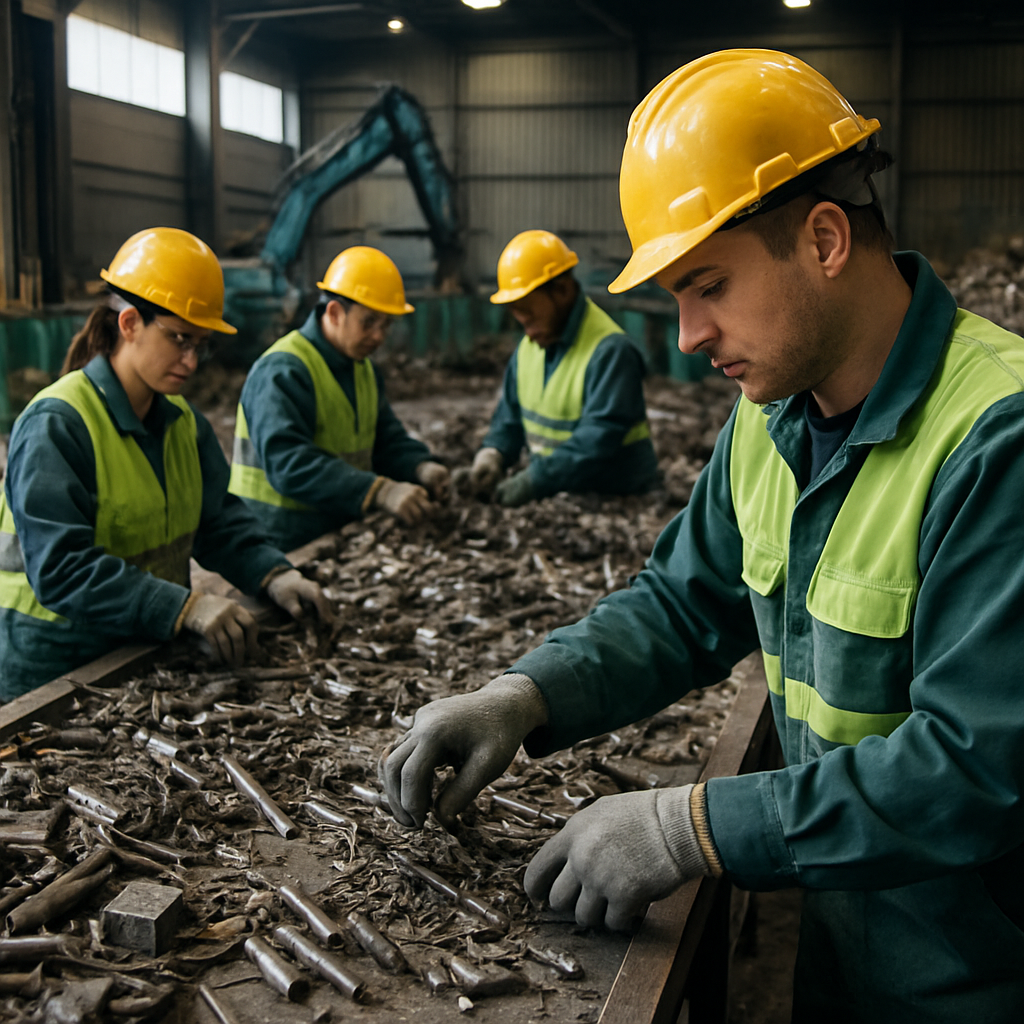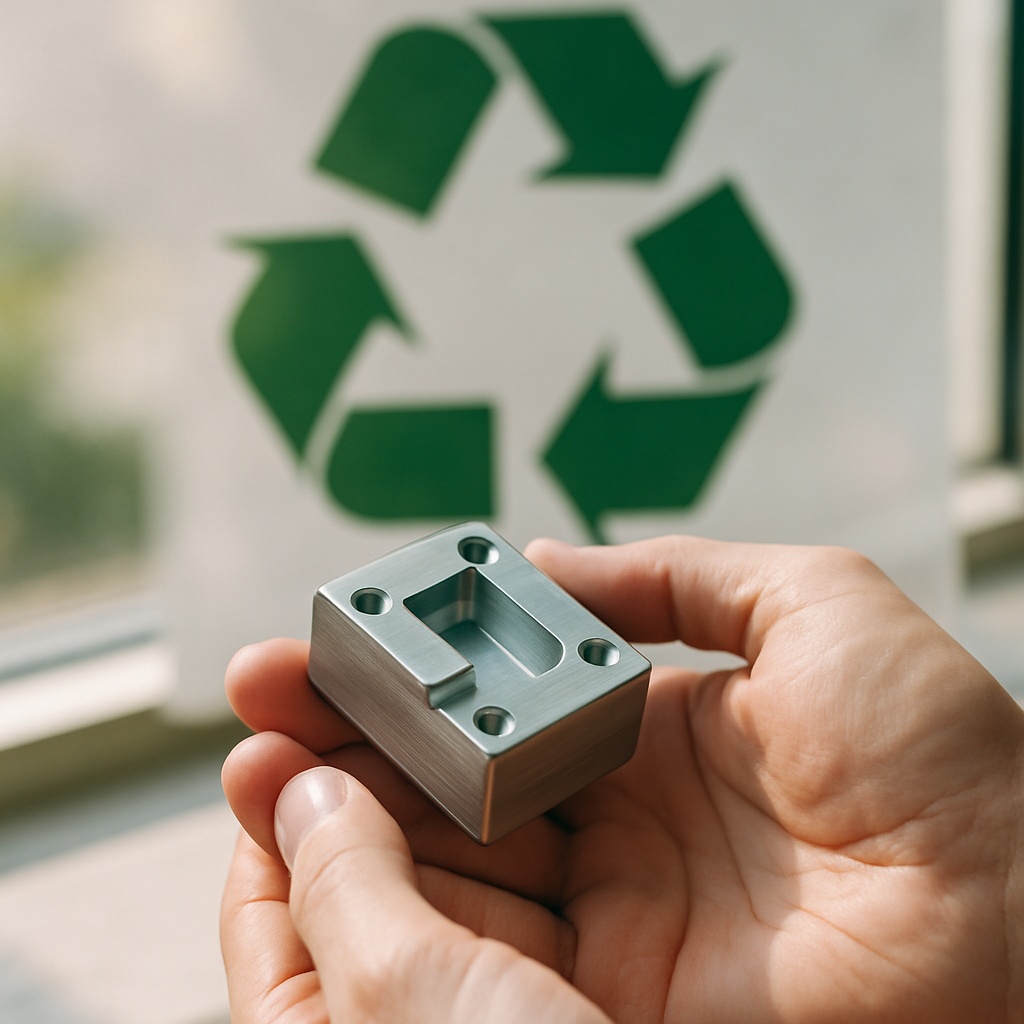5901 Botham Jean Blvd, Dallas, TX 75215
Scrap Metal Refining Techniques: A Complete Guide to the Process
October 23, 2025Every discarded metal item holds untapped value. Scrap metal refining transforms what many consider waste into valuable resources through specialized purification processes. These techniques convert metal waste into reusable raw materials, preserving resources and reducing environmental impact.
While the concept is simple, its impact is significant. Instead of extracting new metal ores from the earth—an energy-intensive and environmentally damaging process—refining recovers metals from items that have reached the end of their useful life. This circular approach keeps valuable materials in use and out of landfills.
Metal refining has become increasingly sophisticated in recent years. From advanced sorting technologies to precision purification methods, the industry continues to develop more efficient ways to recover metals at higher purity levels with less energy consumption.
How Are Scrap Metals Sorted and Processed?

Scrap metal recycling begins with efficient sorting systems that separate materials by type. The primary division occurs between ferrous metals (containing iron) and non-ferrous metals (like aluminum, copper, and brass). This initial classification is crucial for determining the value and subsequent processing steps.
Magnetic Separation: The First Step
Magnets play a vital role in the initial sorting process. Large electromagnets, often attached to cranes or conveyors, efficiently separate ferrous metals from mixed scrap piles. These powerful magnets can lift and transport heavy loads of iron and steel while leaving non-ferrous metals behind.
When these electromagnets are energized, they generate strong magnetic fields that attract ferrous materials. This allows recycling facilities to quickly sort through tons of mixed metal scrap. Once the ferrous metals are separated, non-ferrous metals can be further sorted for higher-value recycling streams.
- Electromagnetic cranes: Used in scrap yards to lift and move large volumes of ferrous metals
- Overband magnets: Installed above conveyor belts to automatically remove ferrous metals
- Magnetic drum separators: Rotate to attract and separate ferrous materials from mixed waste streams
- Eddy current separators: Specialized equipment that sorts non-ferrous metals like aluminum using magnetic fields
Further Processing and Size Reduction
After initial sorting, scrap metals undergo size reduction to make them suitable for melting. This processing typically follows several stages, each preparing the metal for efficient recycling.
First, hydraulic machinery compacts larger pieces of scrap metal into dense bundles. Balers compress materials like car bodies or appliances into manageable sizes. For metals that cannot be easily compacted, cutting equipment such as shears and torches divide them into smaller sections.
Shredding is another critical processing step. Industrial shredders tear apart metal scraps into smaller fragments, increasing surface area and melting efficiency. The DE-STONER® and similar air classification systems remove unwanted materials like dirt, plastic, and rubber that may contaminate the metal stream.
Hammer mills deliver the final processing blow, breaking down metal fragments to prepare them for furnaces. These powerful machines use rapidly moving hammers to crush metal into pieces small enough for efficient melting and refining.
The Impact of Proper Sorting on Recycling Efficiency
Proper sorting significantly impacts the entire recycling process. When metals are accurately classified, recycling facilities can:
- Maximize material value: Non-ferrous metals like copper and aluminum command higher prices than ferrous scrap
- Reduce energy consumption: Well-sorted metals require less energy to process
- Improve end product quality: Proper sorting prevents contamination in the final recycled metals
- Increase processing speed: Streamlined sorting systems allow facilities to handle larger volumes
The sorting and processing of scrap metals involves sophisticated systems that evolve with technology. Modern recycling facilities increasingly employ sensor-based sorting technologies that can identify metals based on their atomic properties, refining the separation process beyond what magnets alone can achieve.
| Technology | Application |
|---|---|
| Magnetic Separation | Separates ferrous metals using magnets |
| Eddy Current Separation | Sorts non-ferrous metals like aluminum using magnetic fields |
| LIBS (Laser-Induced Breakdown Spectroscopy) | Identifies metals and alloys, distinguishing small composition variations |
| X-ray Transmission (XRT) | Differentiates materials based on density |
| X-ray Fluorescence (XRF) | Detects heavier elements like iron and copper |
| AI-based Sorting | Uses optical fingerprinting for high-precision sorting |
What Melting and Purification Methods Are Used?
Scrap metals are melted in specialized furnaces with temperatures tailored to the metal type being processed. Aluminum melts at a relatively low 1,220°F, while steel requires much higher temperatures nearing 2,500°F. These furnaces provide a controlled environment for transforming metals from solid to liquid, facilitating easier separation and refinement.
Once melted, metals undergo purification processes to eliminate unwanted materials. Electrolysis is one of the most effective methods, functioning like a metal filter powered by electricity. An electric current passes through a solution containing the melted metal, causing pure metal to deposit on one electrode while impurities stay in the solution or gather at another electrode. This technique can achieve purity levels of up to 99.99% for metals like copper.
Electromagnetic separation is another effective purification approach, leveraging different magnetic properties of metals and contaminants. In a magnetic field, ferrous materials are attracted to magnets while non-magnetic materials continue on a different path. This method is particularly effective for sorting mixed metal streams before melting.
Many recycling facilities also use furnace refining techniques, where chemical agents called fluxes are added to the molten metal. These fluxes react with specific impurities, forming compounds that either float to the surface as slag or sink to the bottom of the furnace. The slag layer is then skimmed off, leaving cleaner metal behind. This process is similar to how soap removes dirt by binding to unwanted materials.
How Is Refined Metal Prepared for Reuse?
After purification through methods like electrolysis, refined molten metal enters the crucial final stage of preparation for reuse. The metal must be transformed from its liquid state into solid forms that can be easily transported and utilized by manufacturers. This solidification process is essential in completing the recycling loop, allowing these valuable materials to return to production.
During solidification, the purified molten metal is carefully poured into specially designed molds to shape it into standardized forms. These typically include sheets, rods, ingots, or blocks, depending on the metal type and its intended application. As the metal cools in these molds, it hardens into solid pieces with consistent dimensions and properties. Some facilities add specific chemicals during this cooling phase to enhance certain characteristics of the metal.
For certain metals, the solidification process is known as baling, where the metal is compressed into dense blocks. This technique creates compact, uniform shapes that maximize transportation efficiency and minimize storage space requirements. Baled metals are easier for manufacturers to handle, measure, and incorporate into their production processes.
The temperature and cooling rate during solidification significantly impact the final metal properties. Controlled cooling ensures optimal grain structure formation within the metal, which directly affects its strength and durability. Rapid cooling produces smaller grains, often resulting in stronger materials, while slower cooling allows for larger grain development suitable for different applications.
Once solidified, these refined metal forms are carefully packaged for transportation to manufacturing facilities. They serve as the raw material for countless new products we use daily, from automobile components and construction materials to electronics and household items. For example, recycled aluminum might become new beverage cans, bicycle frames, or automotive parts. Recycled copper commonly finds new life in electrical wiring, plumbing fixtures, or electronic devices.
Steel recycled through this process often returns as structural beams for construction, appliance bodies, or vehicle frames. Even specialty metals like zinc and titanium are prepared through similar solidification methods before becoming new products in their respective industries. The standardized forms created through the solidification process make it easier for manufacturers to integrate these recycled materials directly into their production lines.
| Metal | Common Products Made |
| Steel | Rebar, Beam, Sheet, Plate |
| Aluminum | Gutters, Wheels, Cans, Pool Cages, Radiators, Sheet Aluminum |
| Copper | Radiators, Christmas Tree Lights, Pipe/Tube, Insulated Wire, Circuit Boards, Laptops, Memory Cards |
| Brass | Valves, Pumps, Sprinklers |
| Lead | Batteries, Radiation Shielding, Roofing |
What Are the Benefits of Scrap Metal Refining?

Scrap metal refining is one of the most impactful recycling processes available today. The environmental benefits are substantial. By reducing the need for mining raw materials, scrap metal refining helps preserve landscapes and habitats that might otherwise be disrupted. The process consumes significantly less energy compared to producing metals from virgin ore. For instance, recycling aluminum saves up to 95% of the energy required for new production, while steel recycling saves approximately 56%.
The economic advantages of metal refining are equally impressive. The industry creates jobs throughout the recycling chain, from collection and sorting to processing and manufacturing. These employment opportunities support local economies while contributing to the larger recycling infrastructure. Businesses benefit from reduced manufacturing costs when using recycled materials, making their products more competitive. For individuals, scrapping metal provides income while keeping valuable resources out of landfills.
Scrap metal refining exemplifies circular economy principles by extending the useful life of metal resources indefinitely. Unlike many materials that degrade during recycling, metals can be processed repeatedly without losing their essential properties. This continuous cycle of use, collection, refining, and reuse is a strong opportunity for sustainable resource management. If you have scrap metal that needs proper handling and recycling, contact Okon Recycling at 214-717-4083.
